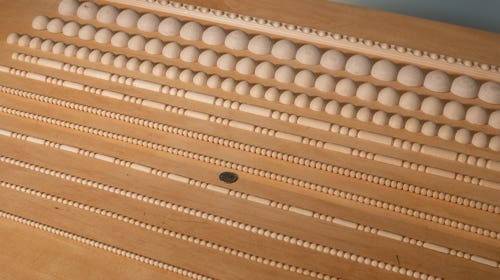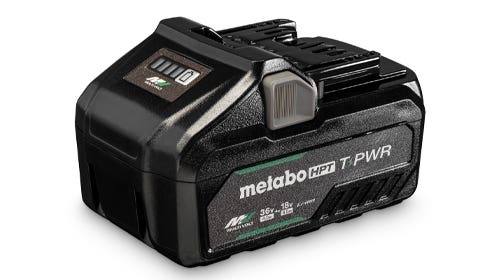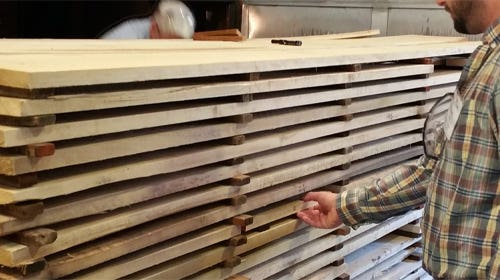Letters to the Editor: A mixed message about the Amish
Regarding “Cleveland fair helps Amish go global,” on Page 10 of the September 2010 issue: I grew up in a rural community where hundreds of plain white homes of the…
Regarding "Cleveland fair helps Amish go global," on Page 10 of the September 2010 issue:
I grew up in a rural community where hundreds of plain white homes of the Amish are barely visible on the backdrop of a Northeast Ohio winter. A Buckeye-born furniture maker, this story about Cleveland piqued my interest and I read the article with a smile. We Yankees, as the Amish refer to us, get a kick out of the irony that is "modern day" Amish life. There are different orders of the Amish and different levels of strictness. When most folks think of Amish, they think of the stereotypes: no electricity, no zippers and buggies. However, many of the Amish circumnavigate some of the rules using gas-powered saws and equipment. Some of the younger Amish have cell phones and there is even the occasional horse-drawn DUI arrest.
I currently live in Tennessee, and many times when I return home I check out what the Ohio Amish furniture builders are making. The Amish, who don't watch television, make entertainment centers and computer desks. They even sell furniture online. Much of their success lies in marketing craftsmanship and the Amish brand. Whether it's reality or not, the Yankee buying Amish furniture imagines someone handcrafting each piece the same way the craftsman's trousers were stitched - by hand. They have a reputation for building strong furniture with traditional designs. Their market appreciates that Mission style simplicity.
Ned Hill's notion in this article that this community devoted to simple life and modesty needs help to "move their products into more modern woodwork that is not traditional for them," is confusing. I sort of get it. They're trying to expand their market, especially in this economy, to reach more than people who like oak, country-style furniture and have duck-print borders in their kitchens. But they're sending a perplexing message about the Amish brand. My argument here isn't that it's impossible to mass-produce great furniture. Stickley, for instance, is a great example of strong furniture built in high volume. But being a viable force in a large-scale metropolitan woodworking marketplace would be difficult with a no-electricity policy. The demand of finishing condos or dormitories would undoubtedly compromise the very reputation that makes Amish furniture unique and distinct in the first place.
Nate Clark
Murfreesboro, Tenn.
What's the point?
I own a sole-proprietor cabinet shop. I was talking to my saw sharpener the other day and when I mentioned the SawStop lawsuit and resulting controversy, he told me about a shop that had tried SawStop and it wouldn't work with the materials it used. What hasn't been mentioned yet in the articles and letters I have read is that it won't work with anything that has conductive material in it, like wet lumber, aluminum, any metal-foil-covered laminate or even some black plastics that are conductive.
When the shop contacted SawStop and asked about this, it was told to operate the saw in bypass mode [which deactivates the safety system's braking feature] when cutting those materials.
I wonder how many saw blades have been ruined and money needlessly spent because of this conductive-material problem and if this is a known problem with SawStop. If all saws in the future will end up with this feature because of a fear of lawsuits and it comes with a switch, what is the point of having it in the first place?
Jim Poelstra
Lodi, Calif.
SawStop's procedure for cutting wet wood and conductive material is stated on the company's website at www.sawstop.com.
Letter writer responds
A few false assumptions have been made about me, somewhat like attacking the messenger instead of the message. I will refute them here, if I may.
1) Whoever takes 20 minutes to simply change a saw blade is really dragging. The last time it took me that long, I also cleaned and rinsed all the accumulated pitch off it before I reinstalled the blade. Anyone who believes they can give a "thorough examination" to a saw blade that has been stopped by the SawStop device and pronounce that it is acceptable for use, deserves the catastrophic material consequences when that blade later explodes or sheds its teeth. And the SawStop cannot prevent personal injury when that happens. The SawStop manual specifically says to replace the blade, not "examine thoroughly."
2) I have never had the "experience" of cutting any part of my body with a table saw or any other power tool. That's because I am extremely careful each and every time. A notable result is that I have had no downtime because of injuries. I work a tiny bit slower and so did my employees, but we do so safely.
3) If some of the people using woodworking tools are so careless that they injure themselves (even repeatedly), those persons should refrain from using those tools. In the workplace, employees who repeatedly violate safety rules (even if there are no injuries) are terminated, if no better reason than to reduce employer liability.
4) What kind of SawStop-style gizmo will be developed for eye injuries caused by even stationary tools? Surely eyesight is worth much more than use of a finger.
5) I have been using metalworking and woodworking tools for more than 50 years and never hurt myself or anyone else because I was trained how not to, to have respect for all tools and always assumed that the danger is always there. And safety always comes first. Not the job completion, not the jig design, not being done in time for lunch, but safety always comes first. Apparently there are enough people who expect someone else to pamper and protect them instead, for poorly-designed ideas like the SawStop to have any market share. And I know quite a bit about design.
6) I don't put production ahead of safety and health (rather the opposite) and have disciplined several employees who did not follow safety rules. The results were that no injuries happened and no downtime was incurred by injuries or having to repair the effects of a poorly-designed safety device.
7) The SawStop can exist for those who think they need hand-holding when they are home. But it should not be mandated for the commercial workplace, just to give the SawStop inventor more money in royalties. And it should not become mandatory through the effects of dubious lawsuits. As I mentioned, what about those who don't even follow the manufacturer's directions?
Ray Goudreau
Bright Water Ltd.
Hickory dickering
Regarding "Old hickory gains some new popularity," on Page 29 of the September 2010 issue:
Hickory is not just one species as you indicate. Instead there are several very different trees in the U.S., plus a lot more throughout the world. Shagbark is not the same as pig nut.
Fact is shagbark is the tree of choice for its bark harvested in early spring, used to make the weaving material for the "split bark" chair and rocker seats. The nuts from the shagbark are the largest and have sweet meat, Pig nuts, from my experience, are so bitter they are not fit to eat. My father-in-law told the story that you could repair a mule harness with the leather-like bark from a hickory sapling that would last the entire summer.
Pecan and hickory might be related, but that is about as far as it goes. Orchard pecan tees have little or no trunk. Who in his right mind would cut such a valuable tree for lumber when shelled pecans sell for several dollars a pound? Kitchen cabinets labeled pecan are, in fact, hickory.
Hickory has a vast number of uses, from hoe handles to furniture and, once upon a time, golf club shafts.
On a business trip to Monterrey, Mexico, my host treated me to a steak dinner. I asked the owner of the place if he used mesquite wood and he said, "Oh no, we would never use that obnoxious weed. We import hickory from Tennessee."
Fred Friar
Lavalette, W.Va.
Let the user decide
I can no longer resist offering my two cents on "the verdict" ["Table saw suit nets $1.5 million verdict," on Page 11 of the May 2010 issue].
When it became evident at IWF six to eight years ago that SawStop had finally evolved to a point of reliability and sound construction, we purchased five of them and retired our Unisaws. Having had a serious table saw accident in our shop that permanently disabled a fellow several years before, this was a no-brainer. The saws are well-made and the support is excellent. I really cannot say enough about the company and the machines.
Two hundred dollars for a new blade and pawl in the event of a misfire, which has happened four to five times in the time we have owned the saws, is peanuts compared to the alternative. However, the purchase decision of any tool or technology should be left to the tool manufacturer or tool user. It should not be rammed down their throat by a lawyer sweet-talking a jury.
Dave Short
President
Amherst Woodworking & Supply Inc.
This article originally appeared in the November 2010 issue.







